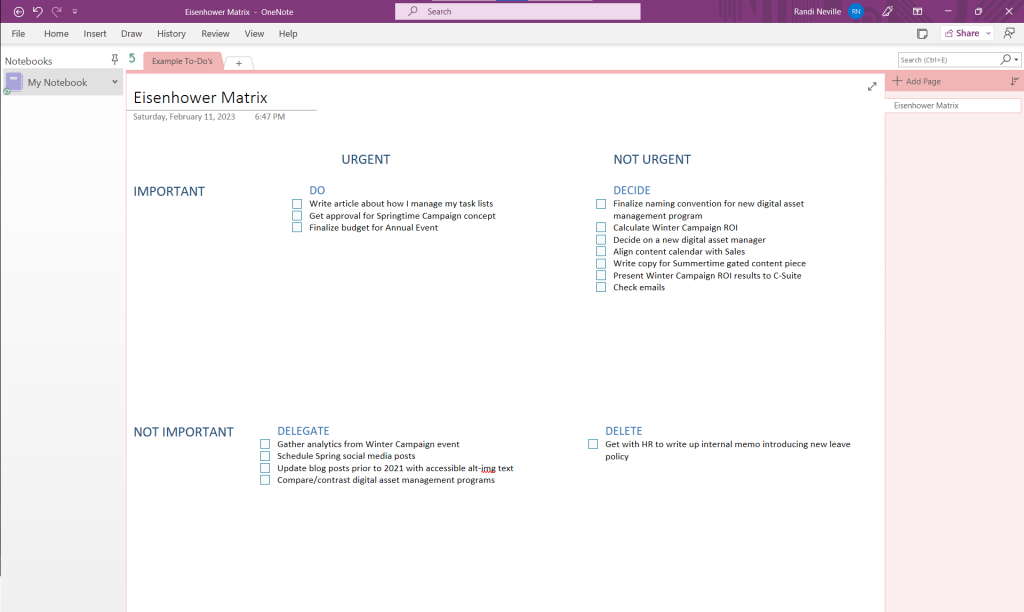“Content marketing is a marathon, not a sprint.”
That cliché is cold comfort when you’re buried in assignments, distracted by the constant ping of new requests hitting your inbox, and dreading when your brand’s latest change initiative trickles into your department. Working with generative AI tools can help, but they aren’t the only tools to get more efficient. Here are human-created tips, templates, and cheat sheets for content strategy, management, creation, and optimization.
Content strategy
Robert Rose explains that a content strategy’s primary purpose is to develop and manage core responsibilities and processes. But, he admits, its operating concepts defy easy explanation. Robert uses a mnemonic device for the five key pressure points. Keep each C in focus as you develop (or sharpen) your strategy:
- Coordination: Your strategy should guide and govern all your content activities — from how raw ideas get turned into assets to how business value will be determined. Without properly coordinating those processes, you’ll likely struggle to measure or repeat the successful outcomes your content drives.
- Collaboration: The job of a content marketer isn’t to be good at content — it’s to enable the business to be good at content. To achieve that goal, content must be collaborative with responsibilities shared across business functions. “Scalability only happens through an effective, collaborative approach to transforming ideas into content and content into experiences,” Robert says.
- Content before Containers: Marketers are trained to create content based on the platform and channel buckets to fill. Yet this approach traps content in a single context, making it harder to repurpose top-performing assets or gain production efficiencies. Robert recommends taking a reverse approach: “The first step must be to create fully formed ideas (big and small) and then (and only then) figure out which containers and how many might be appropriate.”
- Channels: Channels dictate how you ultimately reach the customers and how the customers will access your content. Robert says that content measurement becomes guesswork at best without a clear strategy for every channel you’re leveraging.
Content management
Your strategy can’t drive success if you struggle to activate it.
After trying (and failing) multiple productivity tools, trackers, and techniques, IronEdge Group’s Randi Neville says an Eisenhower matrix helped make her tasks more manageable.
Create a vertical Y axis and a horizontal X axis. Label the top of the Y axis as “important” and the bottom as “not important.” Label the X axis as “urgent” on the left and “not urgent” on the right, creating four quadrants. It should look like Randi’s sample template below:
List current content tasks and place each into a quadrant on their level of urgency and importance:
- DO tasks are both highly urgent and important. They need to be done now. Randi prefers to define now as “today,” but set your timeframe to mean within the next hour, week, or month.
- DECIDE tasks are important but not as urgent — you decide when to work on them. Block that time off in your calendar so meeting requests and other tasks don’t create conflicts.
- DELEGATE tasks are urgent but aren’t top priorities or require more time or focus than you can spare now. Redistribute these tasks to other team members to ensure they’ll be handled promptly.
- DELETE tasks have minimal importance or urgency. Remove them from the matrix if you feel they aren’t necessary; otherwise, consider recategorizing them for delegation.
Once all tasks are listed under the appropriate category, reorder so your highest priorities are on top. Randi shares an example of how the matrix might look once you’ve done this:



![How To Tame Content Tasks With These 5 ‘Cheat Codes’ [AI Not Required]](https://www.pharmamarketeer.nl/wp-content/uploads/2024/01/asian-female-photographer-working-in-a-studio-2023-11-27-05-13-55-utc-1-1000x500.jpg)


![[branded content] De vijf belangrijkste customer experience trends voor 2024](https://www.pharmamarketeer.nl/wp-content/uploads/2024/04/customer-experience-385x300.jpg)




